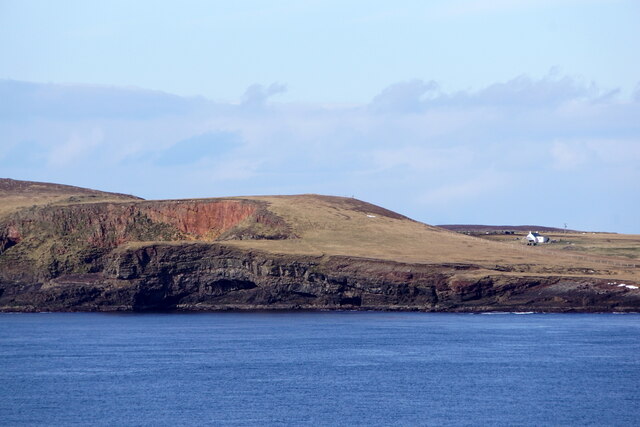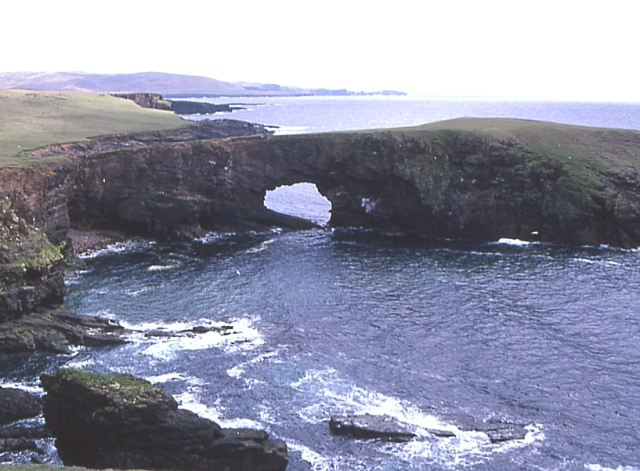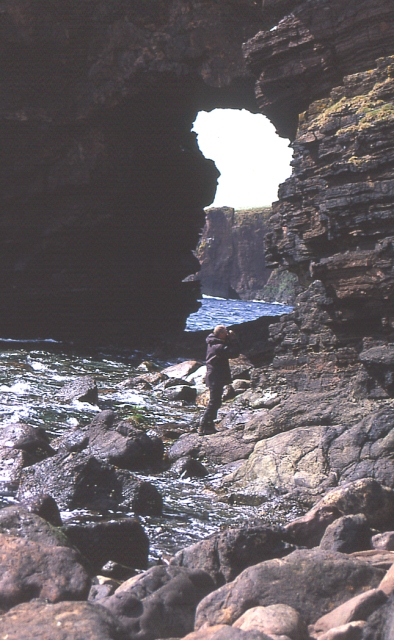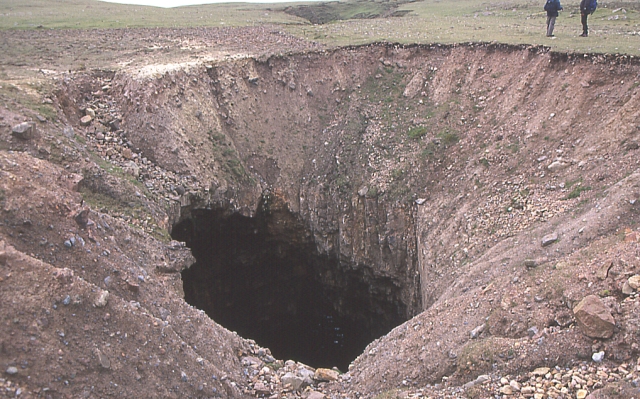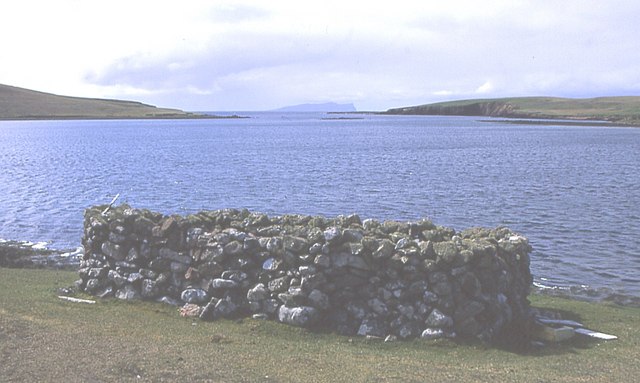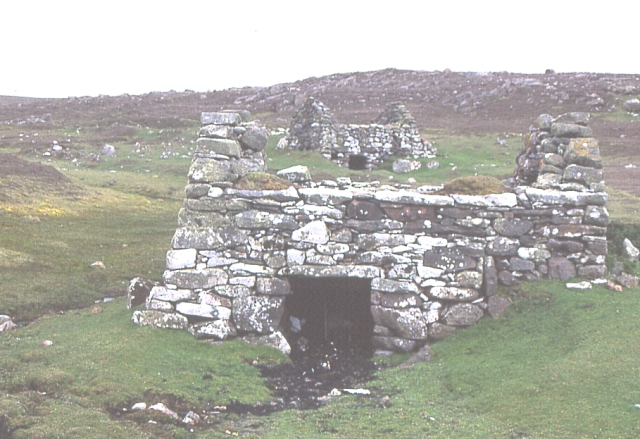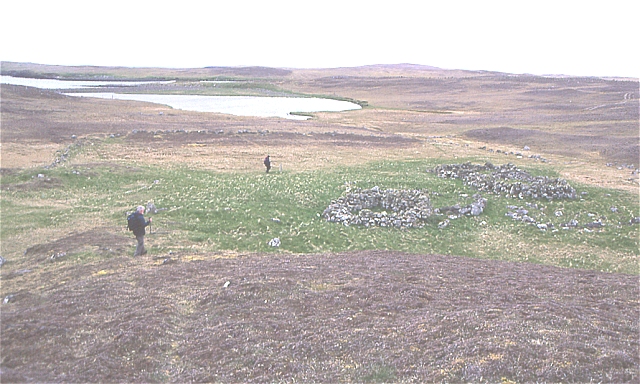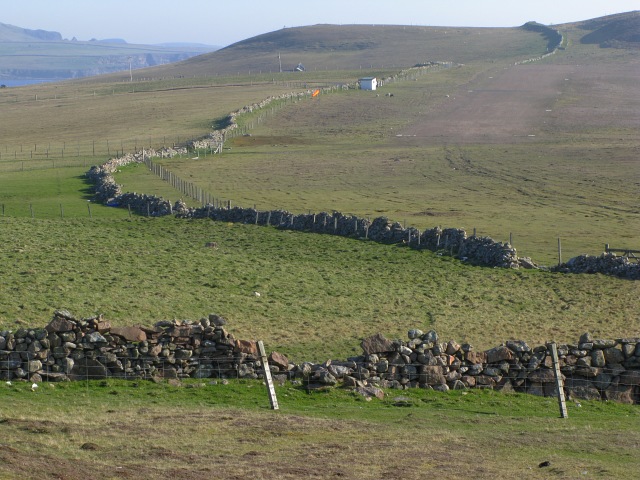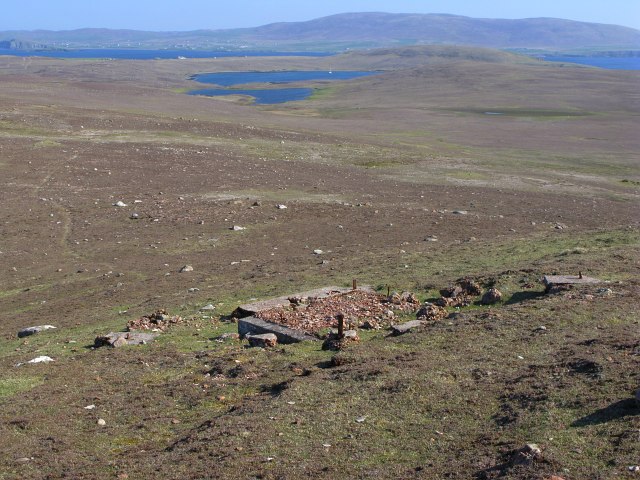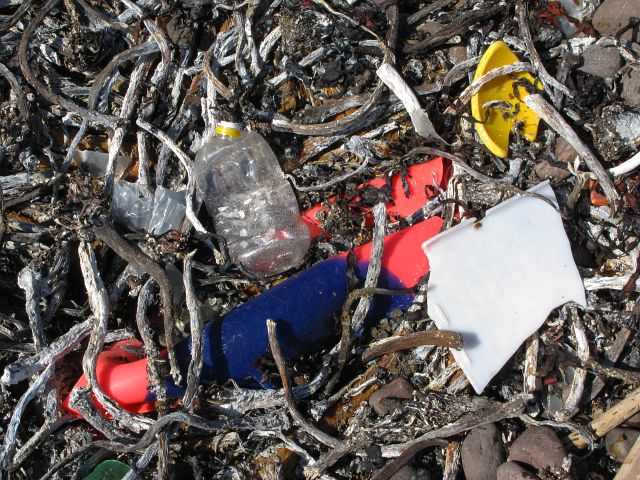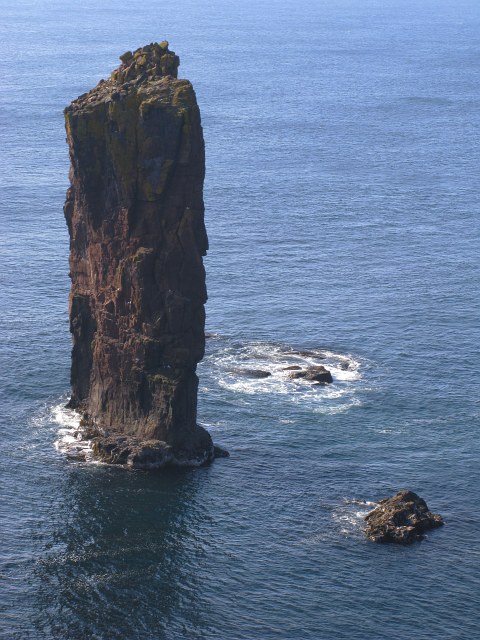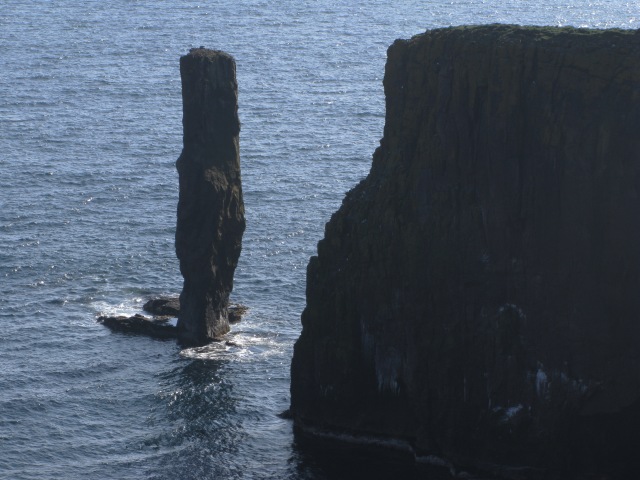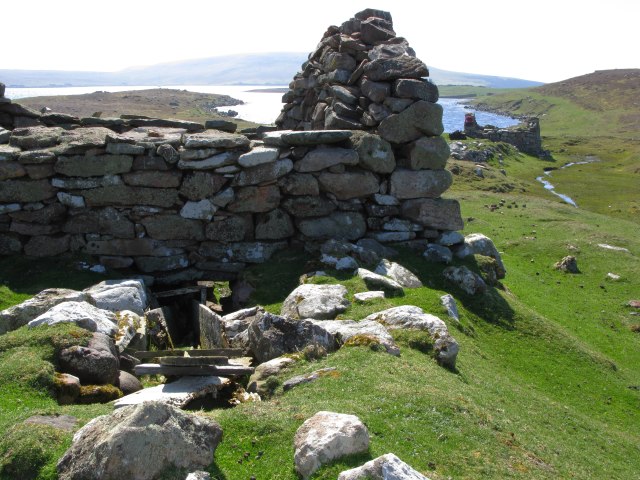Brei Geo
Coastal Feature, Headland, Point in Shetland
Scotland
Brei Geo
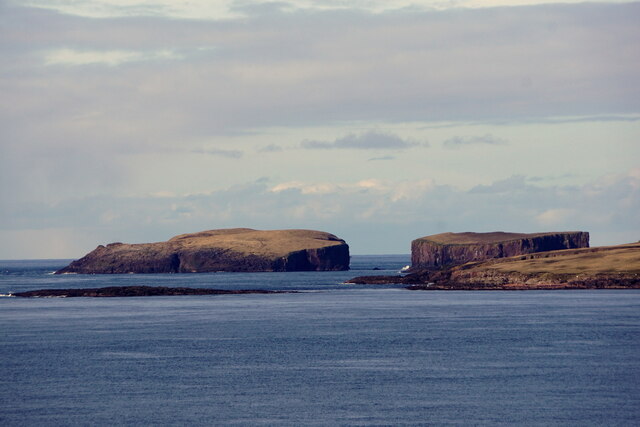
Brei Geo is a prominent coastal feature located in the Shetland Islands, which are part of Scotland. It is specifically situated on the west coast of the island of Mainland, near the settlement of Walls. Brei Geo is primarily characterized as a headland, also referred to as a point, due to its protrusion into the surrounding sea.
This coastal feature stands out due to its rugged and rocky terrain, with steep cliffs that plunge into the cold North Atlantic Ocean. These cliffs are composed of various types of sedimentary rocks, such as sandstone and shale, which have been shaped and eroded by the relentless action of the waves over centuries.
Brei Geo offers breathtaking views of the surrounding coastline and the open sea. It is also known for its rich biodiversity, as it serves as a habitat for numerous bird species, including puffins, guillemots, and razorbills. Visitors to Brei Geo may have the opportunity to observe these birds nesting on the cliffs during the breeding season.
In addition to its natural beauty, Brei Geo has historical significance as well. The area surrounding the headland is dotted with archaeological sites, including ancient settlements and standing stones. These remnants of the past provide insight into the island's human history and offer visitors a glimpse into the lives of its early inhabitants.
Overall, Brei Geo is a captivating coastal feature in Shetland, known for its dramatic cliffs, diverse birdlife, and historical significance. It attracts nature enthusiasts, history buffs, and those seeking awe-inspiring views of the rugged Shetland coastline.
If you have any feedback on the listing, please let us know in the comments section below.
Brei Geo Images
Images are sourced within 2km of 60.323926/-1.7221648 or Grid Reference HU1560. Thanks to Geograph Open Source API. All images are credited.
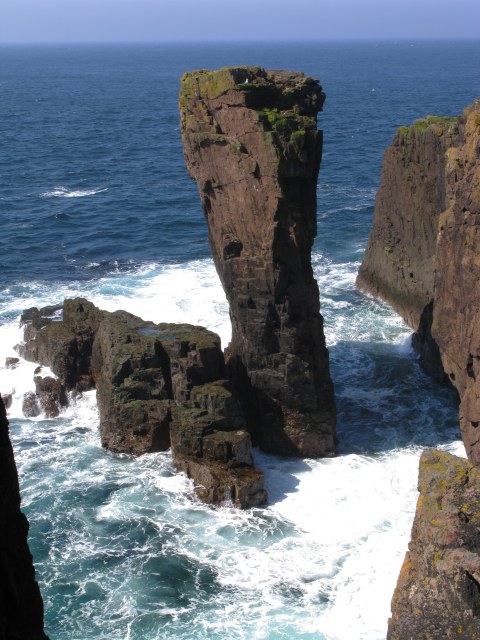
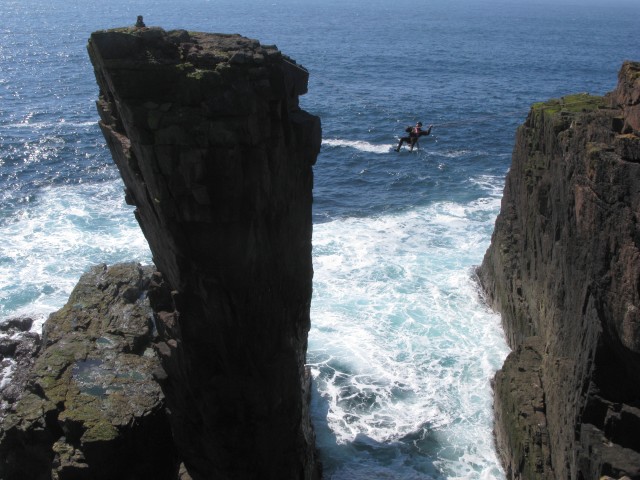
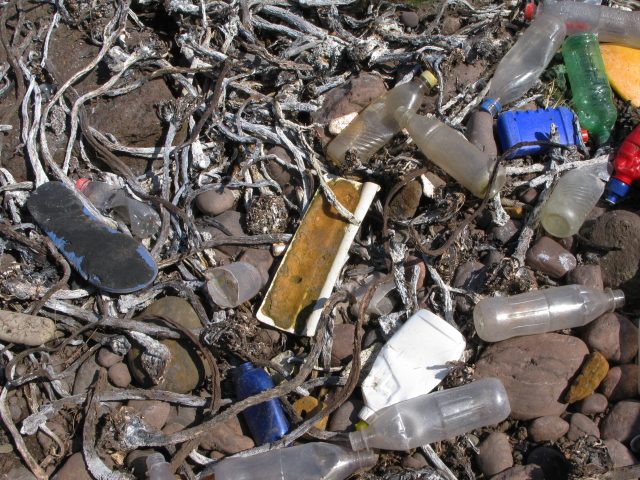
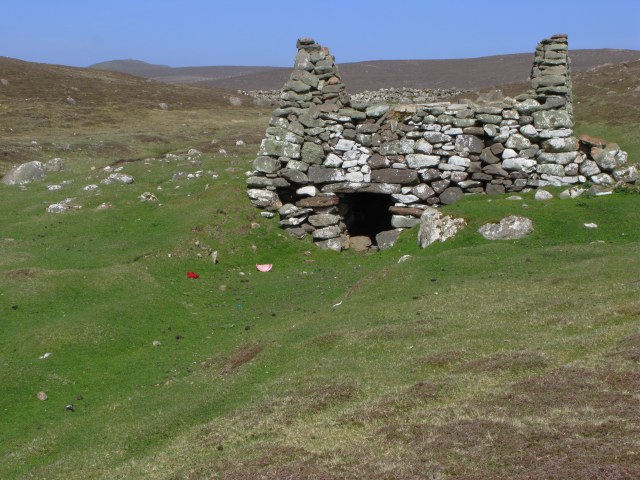
Brei Geo is located at Grid Ref: HU1560 (Lat: 60.323926, Lng: -1.7221648)
Unitary Authority: Shetland Islands
Police Authority: Highlands and Islands
What 3 Words
///solicitor.mincing.deep. Near Walls, Shetland Islands
Nearby Locations
Related Wikis
Papa Stour Airstrip
Papa Stour Airstrip is a small airstrip in the village of Biggings on the island of Papa Stour. Shetland, Scotland. == History == Papa Stour Airstrip opened...
Papa Stour
Papa Stour (Scots: Papa Stour) is one of the Shetland Islands in Scotland, with a population of under fifteen people, some of whom immigrated after an...
Biggings
Biggings is a village on the island of Papa Stour, in Shetland, Scotland. Papa Stour's church is situated at the south of Biggings. A homestead of Duke...
Forewick Holm
Forewick Holm is a 1-hectare (2.5-acre) island in the Sound of Papa in the Shetland islands, Scotland. Located between Papa Stour and the Sandness peninsula...
Brei Holm
Brei Holm is a tiny tidal islet in the western Shetland Islands. It is due east of Papa Stour, to which it is connected at low tide, just outside Housa...
Maiden Stack
The Maiden Stack or Frau Stack is a tiny stack in the western Shetland Islands to the north of Brei Holm and east of Housa Voe in Papa Stour. It is so...
Sandness
Sandness (the "d" is not pronounced locally) is a headland and district in the west of Shetland Mainland, Scotland. Sandness was a civil parish, which...
Bousta
Bousta is a settlement on Mainland, in Shetland, Scotland. Bousta is situated in the parish of Walls and Sandness.Scott's Hawkweed is native to the pastures...
Have you been to Brei Geo?
Leave your review of Brei Geo below (or comments, questions and feedback).
